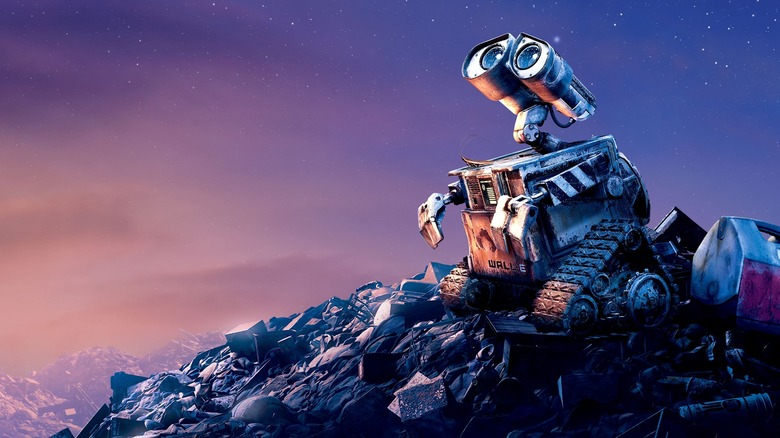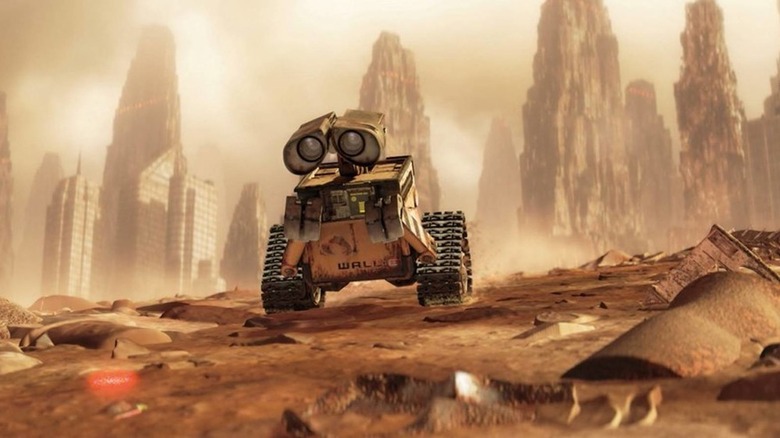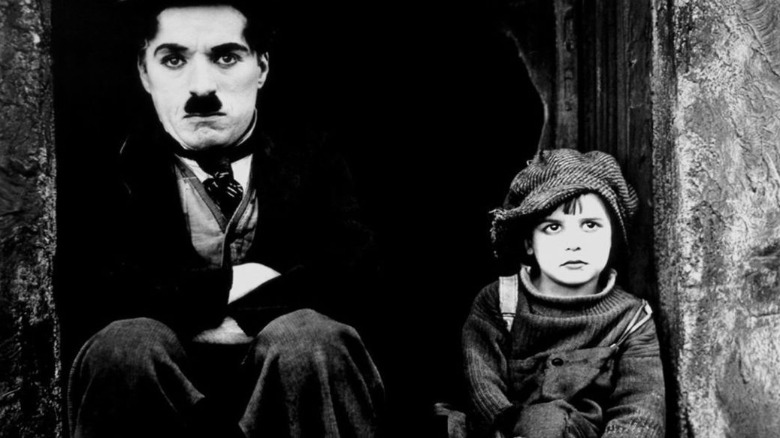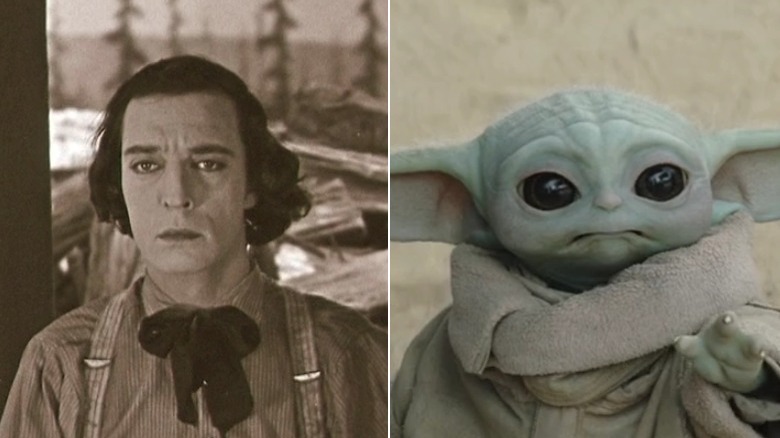WALL-E Drew Inspiration From Two Silent Movie Era Titans
"WALL-E" is arguably one of the most beloved Pixar films to date. Some of the best parts of the story are before the little trash robot comes in contact with humans at all. WALL-E doesn't really speak much, so all his emotion, all his feelings, come across through his movements. The tilt of his eyes, the angle of his head, the speed of his movements, and the objects he cares for are how we learn his story. His little cockroach buddy does the same (and if you told anyone before this film that they'd be rooting for a cockroach, they likely would have told you to go jump in a lake). WALL-E falls in love with the sleek and fancy robot EVE, who shows her emotions by the way her digital eyes move, as she also speaks very little. Even little M-O the cleaning robot, who only says, "Mo," vacuumed his way into our hearts with no dialogue outside that syllable.
Working without dialogue is something we don't see very often, but it does come from the beginning of films. "WALL-E" director Andrew Stanton used that film history to help his team create a character who you feel compelled to root for and hug, despite that he is all angles and made of metal.
A study in movement and expression
In a story from The Hollywood Reporter, we learn that Andrew Stanton not only drew inspiration from the silent film era, but that he and his team actually watched "at least one Charlie Chaplin or Buster Keaton film a day for a year in order to hone their ability to convey emotion silently." Chaplin and Keaton are two of the best-known silent film era actors and filmmakers in history, with Chaplin's Tramp persona as one of the most recognizable.
From Chaplin's 1921 film "The Kid," which he wrote, directed, produced, and starred in, to Keaton's turn in 1926's "The General," these silent films gave us a basis for all the physical comedy we've seen in the century since. The films clearly affected the comedic timing and movements in the animated film, like the moment when WALL-E gets booped in the face by a toy, puts a discarded bra on his eyes, or gets blown backward by a fire extinguisher.
What gives the movie even more of a connection to silent films is the fact that silent films weren't really silent at all. They were usually accompanied by, at the very least, a live organ or piano player, or at the most, an orchestra, punctuating the events with music and created sound effects. In "WALL-E," sound cues punctuate the physical gags, and music appears in the form of the musical "Hello, Dolly!," which WALL-E watches over and over again. Even his expressive eyes mirror Chaplin and Keaton's faces.
Into the present day
We can't exactly call this a trend, but when films and shows do incorporate elements from the silent era, it stands out if it's done right. Take the popular Disney+ series "The Mandalorian." Yes, the main character has dialogue, but for most of the series, every bit of his emotion is conveyed through movement. Even Grogu is all about movement and expressiveness. He only coos right now (which I know because I have the "talking" doll on my desk right next to me), so everything is through his eyes, the tilt of his head, and the way he reaches for Papa Mando. It has very much the same feel to it that you get from watching WALL-E twist his little metal hands together out of loneliness, or the way his eyes get larger when he looks at EVE. Even his little cockroach friend conveys his love for WALL-E through movement — which is good, because a cockroach speaking is a little terrifying.
"WALL-E" was released on June 27, 2008, and if looking at his sweet robot face in the pictures above don't make you want to rewatch the film immediately, your heart needs a hug. It's currently available to stream on Disney+.



